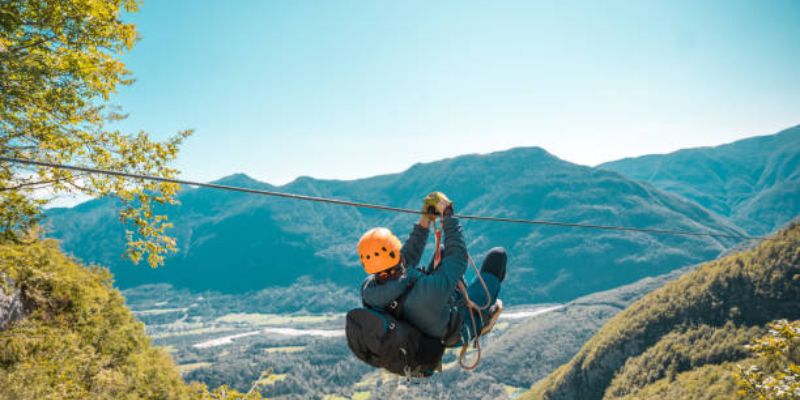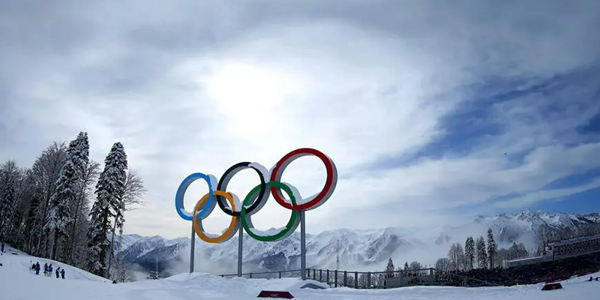Why Ziplining in the Mountains Feels Like Flying
Ziplining in the mountains feels like flying because it combines altitude, speed, and breathtaking scenery into one unforgettable rush. From the first push-off to the final landing, it delivers an unmatched sense of weightless freedom that few other adventures can rival.
More than just an adrenaline sport, it’s a rare mix of science, psychology, and natural beauty that tricks your senses into believing you’re soaring through the sky.

Why Adventure Seekers Are Drawn to the “Flying” Experience
For centuries, humans have dreamed of flying. Ziplining gives a taste of that dream without the risks of skydiving or the skill needed for paragliding. The freedom of the open sky, the hum of the wind, and the feeling of floating between peaks create an unmatched sense of adventure and peace at once.
What Creates the “Flying” Sensation on a Mountain Zipline
Ziplining works on the same basic principles as flight—gravity and momentum. The line’s incline and tension convert potential energy from height into smooth, forward motion. As you descend, gravity pulls you forward, but the angle of the cable keeps your movement stable and balanced. The result feels less like falling and more like gliding through the air.
The Psychological Rush — Adrenaline Meets Calm
The “flying” sensation is also psychological. When your body senses height and speed, it triggers a surge of adrenaline and dopamine. These chemicals heighten your awareness and excitement, while also calming fear once you’re moving. It’s this unique blend of thrill and serenity that makes mountain ziplining so emotionally addictive.
The Visual Effect — Why Mountains Amplify the Feeling
Your eyes play a big part in the illusion of flight. In the mountains, the vast open space below tricks your brain into thinking you’re airborne. The rapid movement of the landscape beneath your feet exaggerates the sense of height and speed. You see treetops shrink and rivers twist far below, just like a bird gliding above its world.
How the Surroundings Enhance the Flight-Like Experience
Altitude and Air Pressure Effects
At higher elevations, the air is thinner and cooler. This change in air pressure makes wind feel smoother on your skin and intensifies the sense of lift. You feel lighter, and the combination of cold air and open space strengthens the illusion of being suspended in the sky.
The Role of Wind and Sound
The wind is what convinces most riders they’re truly flying. As you gain speed, air rushes against your body and face, creating natural resistance similar to wings cutting through air. The muffled sound of wind replaces all other noise, surrounding you in a tunnel of motion that heightens immersion.
The Visual Symphony of Nature
From high above, every detail of the mountain unfolds — green forests, winding rivers, rocky ridges, and tiny villages far below. These visuals don’t just impress; they alter perception. The sheer scale tricks the mind into believing you’re gliding effortlessly across the earth’s surface.

Overcoming Fear: Why It’s Safer Than You Think
The Safety Engineering Behind Modern Ziplines
Zipline systems are built using industrial-grade cables and dual-harness systems designed to hold thousands of pounds. Platforms are engineered to handle extreme weather, and most mountain ziplines undergo strict safety inspections before every season. The braking systems—automatic or manual—are tested repeatedly to guarantee smooth stops. According to REI, modern zipline tours follow rigorous outdoor safety standards that make them one of the most controlled adventure sports available.
Certified Instructors and Safety Briefings
Every professional zipline tour includes certified instructors. They guide riders through harness checks, proper body positioning, and braking techniques before each launch. Riders are also equipped with helmets and safety lines that stay clipped to the cable at all times. With trained supervision, the margin for error becomes extremely small.
Tips to Enjoy the Ride Without Fear
If fear creeps in, breathing evenly helps the body relax. Keep your eyes open and focus on the horizon instead of looking down. Loosening your grip slightly and leaning back into the harness improves balance and comfort. Once the ride starts, the fear quickly fades, replaced by a deep sense of calm and joy.
Where to Experience the Most “Flying-Like” Ziplines
Some of the world’s best ziplines are set against jaw-dropping mountain backdrops. The Smoky Mountains in the United States offer long scenic routes over misty valleys. The Swiss Alps provide icy, snow-capped runs with dramatic elevation drops. In Costa Rica, jungle-covered mountains give riders a blend of rainforest and high-altitude excitement. Outdoor travel authorities like National Geographic have spotlighted these regions as some of the most breathtaking landscapes to see from above.
Choosing the Right Zipline for Your Comfort Level
Not every zipline is built for speed or height. Some are shorter and slower, designed for beginners who prefer to take in the view. Others stretch over two kilometers, reaching speeds over 60 miles per hour. Checking the altitude, line length, and speed rating helps match your comfort level with the right experience. Start small if it’s your first time, then progress to longer courses as your confidence builds.

Preparing for Your First Mountain Zipline Adventure
What to Wear and Bring
Comfortable, weather-appropriate clothing is key. Choose fitted athletic wear that won’t catch the wind and closed-toe shoes with a good grip. Avoid scarves, dangling jewellery, or loose accessories. A small strap-on camera or GoPro can safely capture your experience from the harness.
Pre-Ride Essentials
Stay hydrated but avoid heavy meals right before the ride. A short stretch or light warm-up helps relax your muscles. Listen carefully during the pre-ride briefing — instructors often share helpful body positioning tips that make the flight smoother.
After the Ride — How to Savor the Experience
Once you land, pause for a moment to absorb what you’ve just done. Look back at the line stretching across the valley and let that sense of awe sink in. Many travelers share reflections and recommendations through TripAdvisor, which can help you plan your next high-altitude adventure. Taking a quiet moment post-ride enhances the memory, helping the “flying” sensation stay with you long after you’re back on the ground.
The Real Reason Ziplining in the Mountains Feels Like Flying
Ziplining in the mountains feels like flying because it combines physics, psychology, and scenery in perfect balance. Gravity and speed create lift, adrenaline fuels euphoria, and wide-open landscapes provide the illusion of flight. Surrounded by wind, sky, and silence, your body believes what your eyes see — that you are soaring freely between the peaks.
It’s a moment of pure human joy — brief, intense, and unforgettable.
Sources
- Learned practical methods
- Solved my questions
- Inspired new ideas











